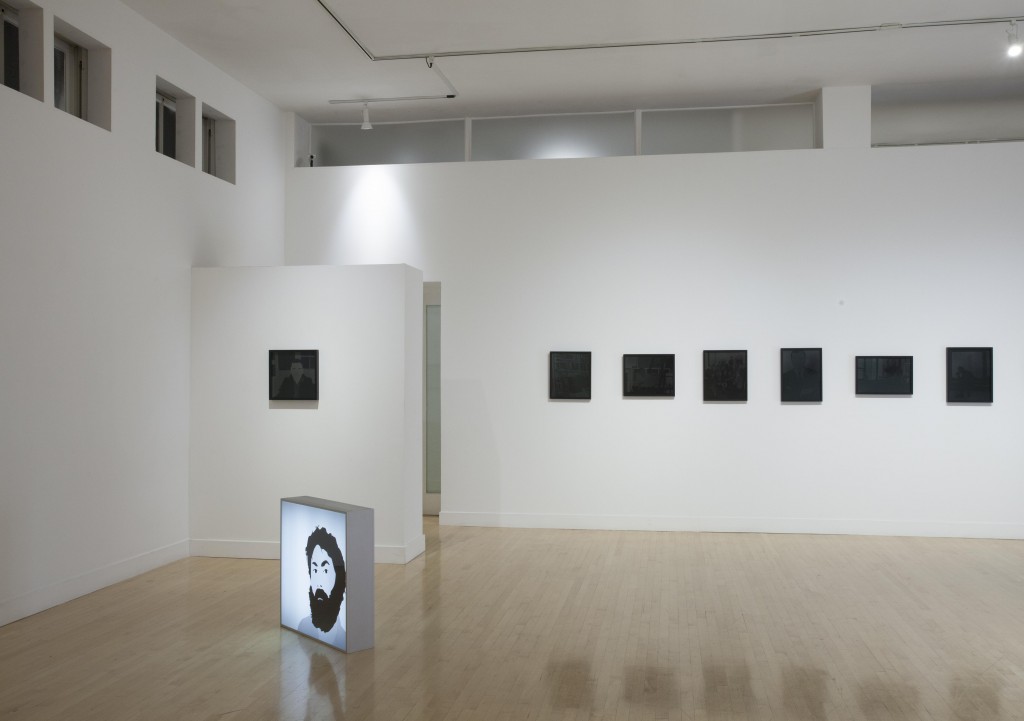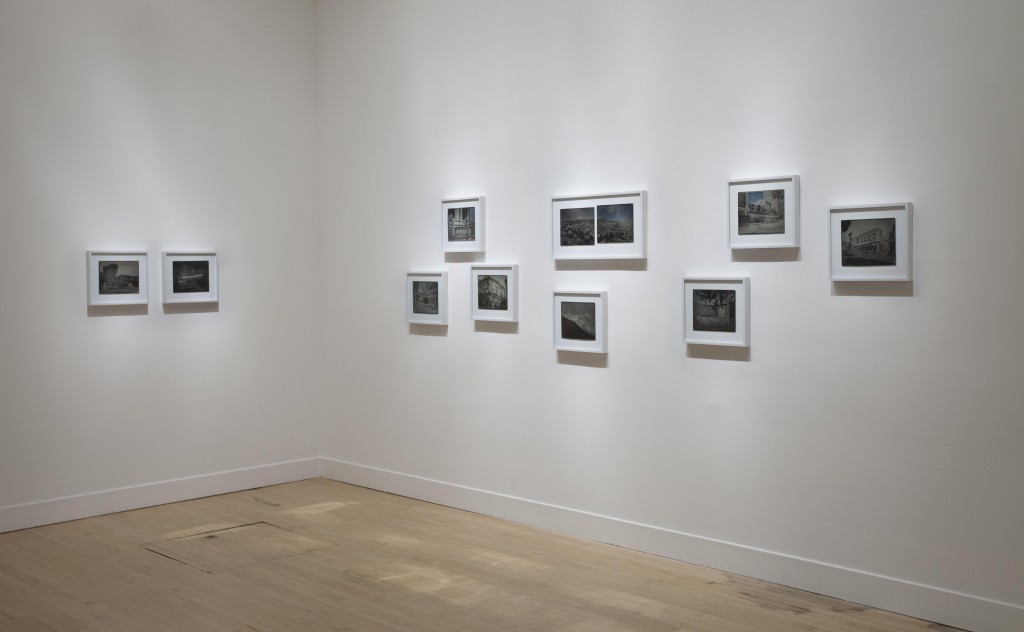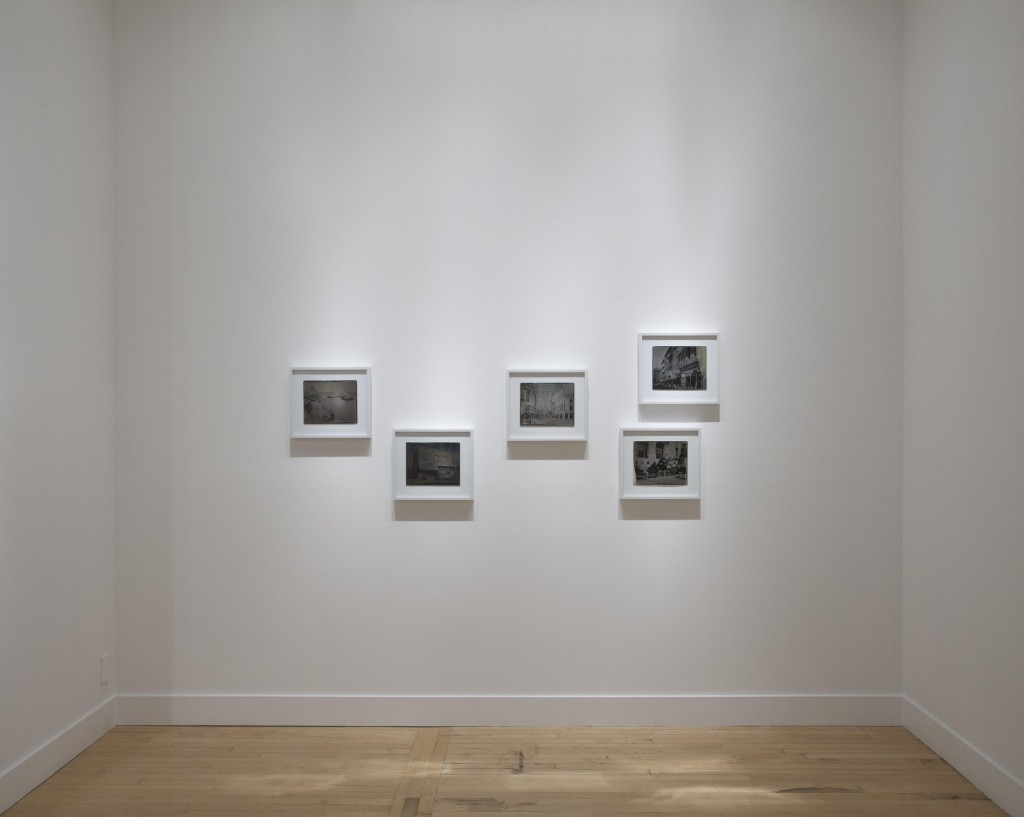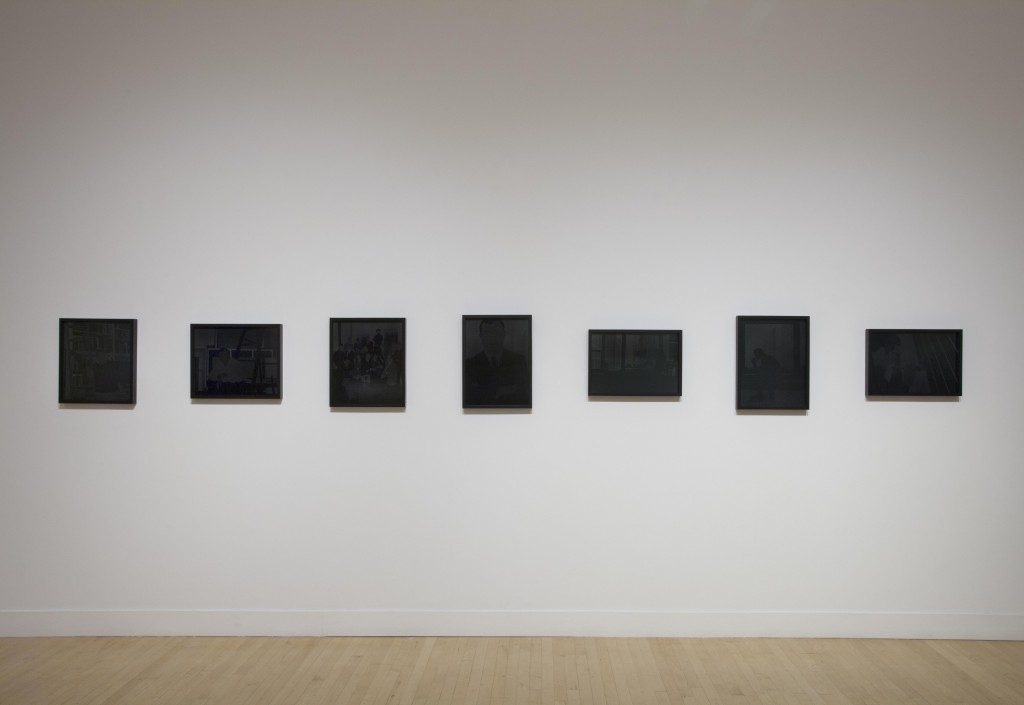Binh Danh & Kota Ezawa @ Haines Gallery

I saw a very cool gallery show last month in San Francisco that, though it has since closed, I still feel is worth briefly writing about. The paired hanging at Haines Gallery of work by Binh Danh and Kota Ezawa presented viewers with two different but equally cutting edge photographic practices. I really enjoyed looking at these pictures and seeing them in the gallery together left me inspired, thinking about what fertile soil the history of photography has made for artists today to take root in.
Ezawa’s pictures, which are made by tracing appropriated film stills in Adobe Illustrator, then using negatives printed from those tracings to produce silver gelatin prints in the darkroom, or lightboxes (of which there were two). There was also a rotoscoped video made with a similar tracing style applied to footage from a documentary about abstract expressionist painters, also the primary subjects of the still work. While the video and lightboxes were interesting, I was drawn more to the prints. There, the rich blacks and dark greys afforded by the use of darkroom fiber paper combined with the precise separation of lines and shapes characteristic of vector graphics produced beautiful, unique results.

Binh Danh’s offering consisted of a group of daguerreotypes made in San Francisco. Though this is a historical process and thus not truly novel, I think that Danh’s commitment to a complex, even dangerous practice, as well as the uncanny look of the resulting plates, can also be considered innovative. There is a magical kind of visual contradiction in play between the archaic technology being used to capture the images and the perfect detail elicited by more modern optics, as well as the distinctly contemporary look of the depicted scenes. The pictures invite us to refresh our vision both of this old way of working and the modern subjects at hand.

Looking at daguerreotypes is an interactive experience, in a way, since the plates become more or less legible depending on where one stands, and varying degrees of detail are apparent from different directions. One must adjust side to side and up and down in order to resolve the best angle for making out a given picture, then recalibrate for the next. It’s difficult to really see more than one image at once. Likewise, Ezawa’s fiber prints lack whites or highlights; only dark tones are utilized and they are barely (but very precisely, as I mentioned above) separated. Like Danh’s daguerreotypes, these pieces also demand a certain level of concentration before the images can be resolved.

There is much more that could be written about this show, in particular about the art historical references in Ezawa’s pieces and perhaps some of the specifics about how the daguerreotype process differs from using modern film, but for my part I think it suffices to say that I really liked how both of the artists presented work that challenged viewers to look closely and rewarded them with both a worthwhile aesthetic experience and intellectual food for thought about the many possibilities offered by the different tools that have been made available to photographers over time.
Installation images courtesy of Haines Gallery.